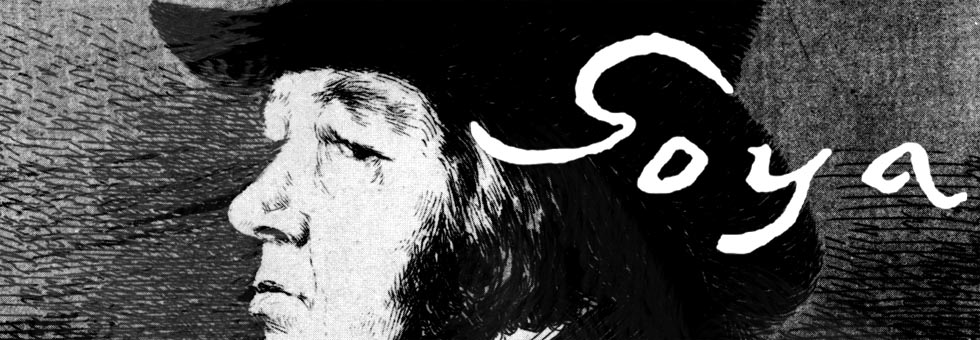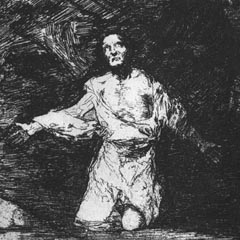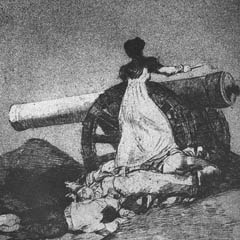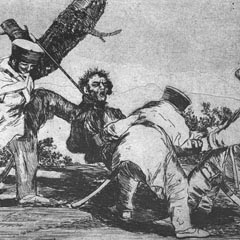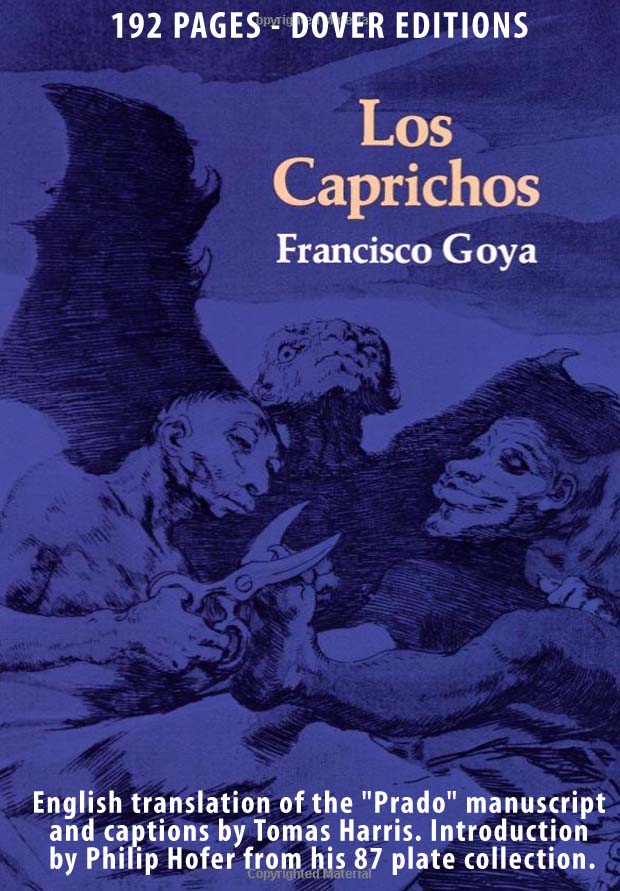Goya | Disasters of War 69
The Disasters of War Plate 69
Nada. Ello Dirá*
Nothing - We Shall See
1810 etching
6 inches by 8 1/4 inches
From an email with a Napoleonic scholar:
"I went back and looked over your historical info. and it looks fine to me. I was actually pleased that you mentioned that the Spanish committed atrocities against the French as well in response for their actions. In your discussion of "Great deeds against the dead" I just wanted to mention that Spanish guerrillas and peasants were also known to have frequently unearthed dead Frenchmen and mutilated their corpses. My other comment concerns your discussion in "the Third of May." You mention the dissatisfaction that many Spanish intellectuals had with Charles and Ferdinand and you say that these two monarchs ruled unsuccessfully. Actually one of the major problems that the Spanish intellectuals had with their kings was that they refused to give their subjects a constitution (a major goal of liberals in the early 19th century). In fact, after the Napoleonic Wars were over, Ferdinand had promised to rule with a written constitution. But when he went back on this promise (he was a real jerk)--this sparked a liberal revolt in Spain in the 1820s which was brutally suppressed." - K.G.
In the Dover edition of the Disastres, Philip Hover notes that original title for this plate from Goya was apparently only "nada," but in the 1863 edition of prints made from the plates, the Royal Academy of Fine Arts of San Fernando added "ello dirá."
The Disasters of War
Plate 1
Fristes presentimientos - Gloomy Presentiments
Plate 7
What Courage! - Que Valor! - Augustina Zaragoza
Plate 39
Great deeds against the dead
Grande hazaña! Con muertos!
Plate 69
Nada. Ello Dira - Nothing
AMAZON
Goya The Terrible Sublime - Graphic Novel - (Spanish Edition) - Amazon
"From this headlong seizure of life we should not expect a calm and refined art, nor a reflective one. Yet Goya was more than a Nietzschean egoist riding roughshod over the world to assert his supermanhood. He was receptive to all shades of feeling, and it was his extreme sensitivity as well as his muscular temerity that actuated his assaults on the outrageous society of Spain." From Thomas Craven's essay on Goya from MEN OF ART (1931).
"...Loneliness has its limits, for Goya was not a prophet but a painter. If he had not been a painter his attitude to life would have found expression only in preaching or suicide." From Andre Malroux's essay in SATURN: AN ESSAY ON GOYA (1957).
"Goya is always a great artist, often a frightening one...light and shade play upon atrocious horrors." From Charles Baudelaire's essay on Goya from CURIOSITES ESTRANGERS (1842).
"[An] extraordinary mingling of hatred and compassion, despair and sardonic humour, realism and fantasy." From the foreword by Aldous Huxley to THE COMPLETE ETCHINGS OF GOYA (1962).
"His analysis in paint, chalk and ink of mass disaster and human frailty pointed to someone obsessed with the chaos of existence..." From the book on Goya by Sarah Symmons (1998).
"I cannot forgive you for admiring Goya...I find nothing in the least pleasing about his paintings or his etchings..." From a letter to (spanish) Duchess Colonna from the French writer Prosper Merimee (1869).
GOYA : Los Caprichos - Dover Edition - Amazon
